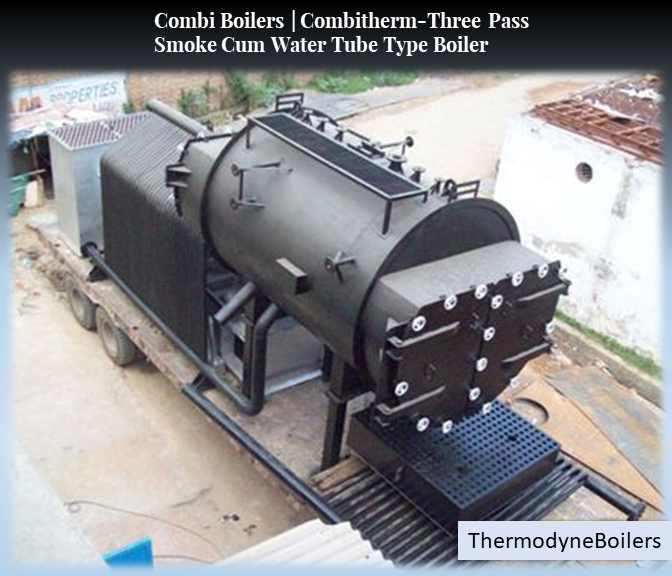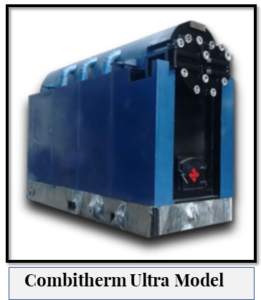Thermodyne Engineering Systems
Husk Fired Boiler: Internal Furnace Top Feed Steam Boilers
Internal Furnace Top Feed Husk Fired Boiler is said so because of their unique automatic fuel feeding from the top of the Internal Furnace boiler. Until now automatic feeding was only possible in case of an external furnace where the furnace is not a part of the boiler.
Internal Furnace Top Feed Husk Fired Boilers are a type of boiler that uses rice husk as fuel. Rice husk is a byproduct of the rice milling process, and it is a renewable and sustainable fuel source. Internal Furnace Top Feed Husk Fired Boilers are designed to be efficient and easy to operate.
The unique feature of Internal Furnace Top Feed Husk Fired Boilers is their automatic fuel feeding system. This system allows the boiler to be fed with rice husk without the need for human intervention. The fuel is fed into the boiler through a hopper, and it is then ignited by a spark igniter. The fire is then controlled by a thermostat, which ensures that the boiler operates at the desired temperature.
Thermodyne Engineering Systems has a dedicated team of qualified researchers and designers who always strive for the best and unique designs. This Husk Fired Steam boiler shows the true example of engineering concepts used in practice.
 Design of Husk Fired ( Internal Furnace Top Feeding ) Steam Boiler :
Design of Husk Fired ( Internal Furnace Top Feeding ) Steam Boiler :
In the rice plant cleaning process, it produces husks which are often treated as waste. This agri waste used as fuel in boiler systems and such boilers called Husk Fired Boiler.
They are basically used for feeding Rice Husk because of its low density. Their design is exactly the same as our INTECH (smoke tube type internal furnace boilers) models where the furnace and smoke tubes are an internal part of the boiler.
Combustion of fuel takes place inside a furnace where most of the radiation heat transfer occurs between flue gases and water while convective heat transfer dominates when flue gases are traveling at high velocity inside the tubes.
Main differences in the design when compared to internal furnace boilers:
- Instead of manual feeding, feeding is done automatically.
- Forced Draft Fan is provided instead of Induced Draft Fan.
Fuel Feeding Mechanism
Rice Husk is fed into a hopper placed above the ducting, connecting the boiler at one end and the Forced Draft Fan at the other. High-Pressure air is sent from the fan via ducting. A damper is provided to manually regulate the flow. Just below a hopper, a low-pressure zone is created by high-velocity air which is responsible for pulling the rice husk into the ducting.
Then the rice husk gets carried by the high-pressure air to the top of the shell where it is fed into a furnace through a narrow passage. This is how the rice husk is fed automatically into a boiler furnace. Fuel feeding is regulated according to the steam capacity requirement and the fuel is regulated by the airflow through a forced draft fan.
Also Read: High Pressure Boilers
Type of Internal Furnace Top Feed Boilers
Thermodyne manufactures 3 types of Internal Furnace Top Feed Boilers which are categorized as same as in case of our INTECH models:
- Dry Back
- Semi Wet Back
- Wet Back
- Intech Dual furnace
For more information related to their types please visit the above links.
Thermodyne has a wide experience in manufacturing Internal Furnace Top Feed Boilers. We have both national as well as the international client who is very well satisfied with its working performance.
Intech Top Feed: Packaged Boilers Advantages:
- Feeding is done automatically.
- No manual interference of any kind is required, only the fuel is fed initially into a hopper.
- Since the furnace is enclosed from the front and the rear end, there are no radiation losses.
- Fuel efficiency is high.
- Fuel is fed equally into a furnace thereby leading to effective combustion of rice husk.
Intech Top Feed Husk Boiler: Packaged Boilers Capacity:
Intech Top Feed – Three Pass Internal Furnace Top Feeding Packaged Type Boiler is available in Capacities Ranging from 0.3 TPH to 6 TPH for Rice Husk.
Also Read: Industrial Fan and Blower
Other Products of Thermodyne Boilers
You can also visit: Thermodyne boilers YouTube Channel
More Useful Content Links Here
- Boiler Losses That Eat Away Your Profits
- Dissolved Gases in Feed Water and Its Effect
- Pressure Reduction System
- How to minimize the Blowdown Losses
Thermodyne Boiler Spare Parts
Internal Furnace Top Feed Husk Fired Boilers FAQ
An internally fired boiler refers to a type of boiler where the combustion of fuel, such as husk or rice husk, occurs inside the boiler shell.
In an internally fired boiler, fuel is introduced into the furnace located within the boiler shell. The combustion of fuel produces hot gases, which transfer heat to the surrounding water through the boiler’s heat exchange tubes or surfaces.
Utilizing husk or rice husk as fuel in an internally fired boiler offers several advantages. These include cost-effectiveness, as husk is readily available and renewable, and environmental friendliness by effectively utilizing agricultural waste.
Yes, rice husk-fired steam boilers may necessitate certain design modifications to accommodate the unique characteristics of rice husk as fuel. These modifications typically involve appropriate fuel feeding mechanisms, ash removal systems, and combustion controls.
The efficiency of husk-fired boilers can vary based on factors such as boiler design, fuel quality, operating conditions, and maintenance practices. Generally, modern husk-fired boilers can achieve high thermal efficiencies.
Numerous manufacturers in India specialize in the production of husk-fired boilers. It is recommended to conduct research, contact reputable manufacturers, or consult industry directories and online resources for a comprehensive list of manufacturers.
Husk-fired boilers find applications in various industries, including rice mills, textile mills, food processing plants, paper mills, and biomass power generation plants, where there is a demand for steam or hot water production.
The primary components of an internally fired boiler include the furnace or combustion chamber, heat exchange surfaces (tubes or plates), boiler shell, water circulation system, controls, and safety devices.
Yes, safety is of paramount importance in boiler operation. Husk-fired boilers should be equipped with safety features such as pressure relief valves, temperature and pressure gauges, flame monitoring systems, and proper ventilation.
Internally fired boilers involve combustion within the boiler shell, whereas externally fired boilers have the fuel combustion occur outside the boiler shell. The resulting hot gases are then transferred to the boiler for heat exchange.


